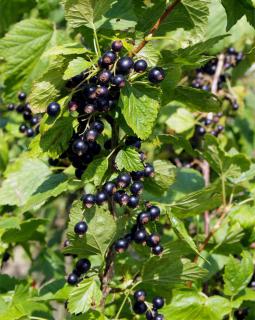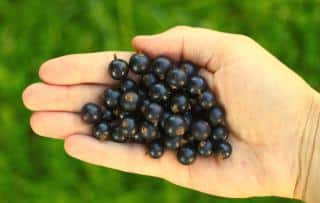

Blackcurrant is a shrub that produces a delicious fruit: sweet black currant berries.
Basic Black Currant facts
Name – Ribes nigrum
Family – Grossulariaceae
Type – fruit shrub
Height – 40 to 50 inches (100 to 120 cm)
Exposure – full sun
Soil – ordinary
Foliage – deciduous
Flowering – April
Harvest – July-August
Planting, pruning, and caring for blackcurrant, here is how you can boost the harvest.
 The planting phase of blackcurrant is an important part of the life cycle of your fruit bush because it determines future growth and harvest for the fruits.
The planting phase of blackcurrant is an important part of the life cycle of your fruit bush because it determines future growth and harvest for the fruits.
If it was purchased with roots bared, you must plant it in fall and try to mingle different varieties to maximize fertilization.
Blackcurrant purchased in pots may also be planted in spring, taking special care to regularly water it at the beginning.
At the end of the winter, cut back old blackcurrant branches to about one-third and free some space in the center to create a bowl-like shape.
Finally, remove dead and fragile branches.
In spring, add fruit tree fertilizer to enhance fruit-bearing and blackcurrant harvest.
In summer, during heat waves or prolonged dry spells, water at the base without wetting the leaves.
Discover a video showing how to correctly prune blackcurrant
In France, only two blackcurrant varieties are grown. These are ‘Black Down’ (very productive) and ‘Noir de Bourgogne’ (Burgundy Black, one of the sweetest).
If you wish to experiment and enjoy more diversity, you may also opt for:
 Be it during the April flowering season or during the summer fruit-bearing, blackcurrant bushes are appealing to the eye and are fine both planted as stand-alones and as a hedge.
Be it during the April flowering season or during the summer fruit-bearing, blackcurrant bushes are appealing to the eye and are fine both planted as stand-alones and as a hedge.
This fruit shrub produces beautiful black berries that sweet-toothed persons like to savor in pies, crumbles, jams and clafoutis.
With a high Vitamin C content, blackcurrant is a must-have in the fruit shrub category.
Blackcurrant is most delicious by far once it is cooked, since it is often very tangy when eaten raw.
As an interesting side note, did you know that its buds produce an oil that is used to make perfume?
If you harvest blackcurrant, wait for the fruit to turn really black before picking it.